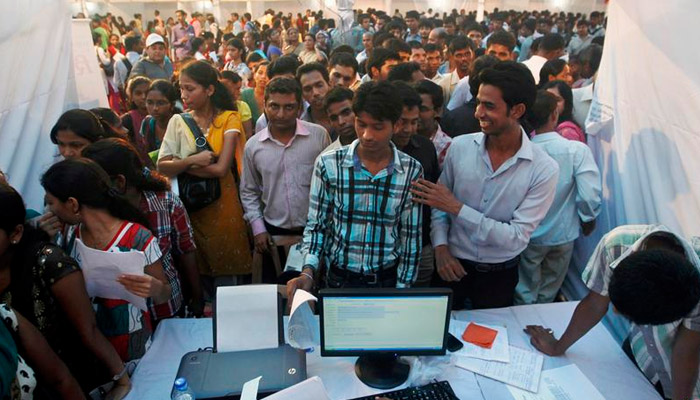New Delhi: The ruling NDA government won a landslide in 2014 on a promise that it will produce jobs. Five years down the line, India is staring at one of the worst job crisis ever.
A report citing National Sample Survey Office’s Periodic Labour Force Survey (PLFS) data, the publication of which was withheld, revealed that unemployment in the country was at a 45-year-high of 6.1 per cent in 2017-18.
Since the official data is yet to see the light of day, professionals turned to other credible sources. An analysis based on a data by a private body Centre for Monitoring the Indian Economy (CMIE) further revealed the nature of the crises.
The Azim Premji University report based on CMIE data found that nearly 50 lakh people in India lost their jobs between 2016-2018, youth being the worst hit. “In general, women are much worse affected than men. They have higher unemployment rates, as well as lower labour force participation rates,” it added.
Though the job loss has been witnessed across sectors, including governments own schemes, its been massive in the informal sector, which constitutes over 80 per cent of the total work force, according to the International Labour Organization.
Experts have said that the informal sector is still suffering from the shock of demonetization.
The only key argument that the government repeatedly had to offer was that how the country could not be producing jobs when the GDP growth rate is among the fastest in the world. This argument saw a massive rebuttal, from experts across the globe, who raised doubts over the GDP figures itself.
Former Reserve Bank of India Governor Raghuram Rajan said in a TV interview: “I know one Minister has said how we can be growing at 7 per cent, yet not have jobs. Well, one possibility is that we are not growing at 7 per cent.”
International Monetary Fund’s (IMF) Chief Economist Gita Gopinath, too, expressed doubt over India’s growth rate, saying there are still some issues with the way India calculates it.
Several experts, social scientists and activists expressed doubt over the unemployment and growth rate figures and alleged that the government was suppressing uncomfortable data.
Explaining one such point of contention, R. Nagaraj of the Indira Gandhi Institute of Development Research told IANS that as the employment rate has fallen, one would also expect output growth to have decreased, unless there is a huge rise in productivity per worker for which there is no evidence.
“So, the rising GDP and declining employment rate for the same year seems anomalous,” he said
Nagraj, alongside several economists, in a statement released earlier, questioned the government’s intent behind the Gross Domestic Product (GDP) methodology revision and called for the restoration of independence of statistical bodies in light of the allegations that government was suppressing uncomfortable data.
The big question for the whole of the political class and in particular the next government is: Can they come out with a definitive long-term strategy to keep unemployment in check?
